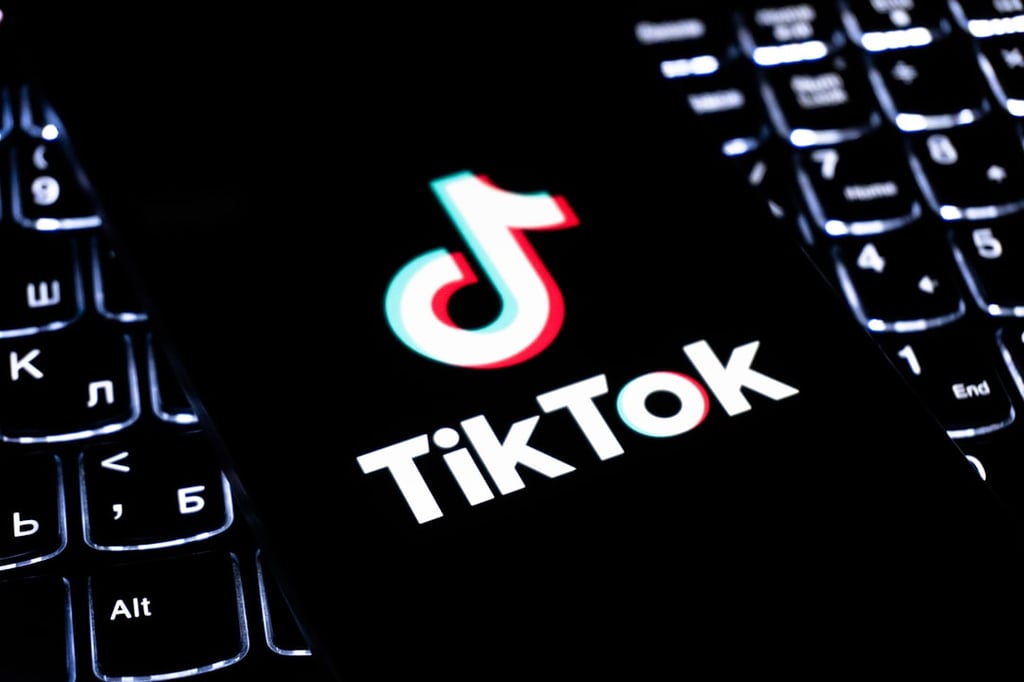It’s time to stop thinking of Amazon’s Kindle Fire tablets as glorified eBook readers. These tablets are sharks in the water, and they’re looking to gobble up Apple and Google market share.
Amazon’s New Kindle Lineup
Amazon announced three new tablets today, and updated one old one.
The new tablets have impressive specs and should perform very well. They’re dubbed the Kindle Fire HDX and Kindle Fire HDX 8.9 — the 8.9 is a reference to the diagonal display size; the unspecified one is 7″.
HDX refers to a high pixel-density screen (at least 323 ppi), which is covered by durable Gorilla Glass. (Note that Apple’s Retina iPad has a 264 ppi density screen, making the new Kindle Fire HDX tablets among the highest-pixel-density tablets on the market.) The larger Kindle Fire HDX has a resolution of 2560 x 1600 and is powered by an Adreno 330 graphics engine. Both have the fast Snapdragon 800 processor running at 2.2 GHz, which Amazon claims runs three times faster than the old Kindle Fire.
The new tablets are light, too. The largest HDX version weighs only 13.2 ounces.
The Kindle Fire HDXs start at $229 and $379 and ship in November and December, respectively.
Amazon also upgraded the Kindle Fire HD and lowered its price to $139, while also introducing larger version — the Kindle Fire HD 8.9″.
Amazon Innovates In Surprising Ways
Amazon announced something they call the Mayday Button, which offers 24 hour-per-day tech support directly (and exclusively) from Kindle devices. By pressing the button (under Quick Settings), a video chat opens with the tech support engineer who can take control of the device and demonstrate fixes and features. They can even draw on your tablet screen to highlight different options. (Note that the user can see the tech support person, but not vise versa.)
Amazon also announced a range of other benefits for Kindle owners.
For example, Amazon is now offering Kindle Fire HDX users the ability to watch movies offline (they can keep them on the device for up to 30 days — once they start watching they’ve got 48 hours to finish).
And a feature called Fling TV enables movies to appear on a regular TV (like Google Chromecast), while the tablet becomes a remote controller for the TV.
People assume that Kindles are glorified eBook readers that can also download movies and music. But Amazon is pushing the concept that the new Kindles are “enterprise ready.” And they’re serious about it, too: The new Kindles support component-level encryption, Kerberos authentication, secure Wi-Fi, corporate VPN compatibility and wireless printing.
While the Kindle Fire was unusual in that it didn’t have a camera, the three new Kindles all have rear-facing cameras for taking pictures. The Kindle Fire HDX 8.9″ has a front-facing camera for video chat and selfies.
Amazon Continues Its Shameless Exploitation of Google
The most interesting fact about Amazon’s tablets is that they use Google code to directly compete against Google. The Fire OS is based on Android. And Amazon’s web browser, called Silk, is based on Google’s open source Chromium project.
This is an unprecedented model in the history of technology. Essentially, Google’s model with Android is to offer a pretty open platform that’s free for any hardware maker to use.
What Google gets in exchange for this is an operating system that’s very popular and Google-friendly — especially friendly to Google’s money making businesses, which include ad-supported services like Search, YouTube and Gmail; for-pay downloadable content like movies, songs, books and apps; and it also enables Google to use its services to collect personal and behavioral data on users in order to give them more contextually relevant advertising and services.
Amazon’s model is to take Google’s free operating system and strip out all the stuff that benefits Google and replace it with stuff that competes directly against Google.
Amazon exploits Google’s massive investment to take business away from Google. This in itself is a brilliant, shameless, even Machiavellian innovation.
All four of Amazon’s Android tablets actually run a modified version Amazon calls the Fire OS 3.0, which was code-named “Mojito.”
Amazon is moving Fire OS further away from vanilla Android with each new update. Version 3.0 one comes with “hundreds of enhancements,” according to Amazon. For example, it has a new task switcher, and other user interface changes. Most improvements, however, are under the hood and improve integration and performance.
Sure, there are ways to “jailbreak” a Kindle Fire. For example, a $20 app called the N2A OS painstakingly deconstructs the Fire OS and strips it down to a vanilla Android install so the Kindle can be used as a conventional Android tablet and take advantage of Google’s services. And Kindle users could access most of Google’s services through the Silk browser.
But Amazon knows that most users simply use the default apps and services. And those defaults on Kindle Fire tablets immerse users in the Amazon universe of products — Kindle books, movies, songs, apps, plus the entire catalog of Amazon products. Amazon dangles special benefits to Amazon Prime members.
Amazon’s Silk browser, by the way, is another source of major innovation. The browser takes every web site clicked on by the user and splits the job of rendering it between the device and Amazon’s powerful cloud services. This improves performance on the device, and is unique in the industry.
Kindles are probably the best-selling Android tablets on the market, although Amazon keeps its unit share numbers a secret. Estimates tend to hover at around one-third of the market, which makes Amazon the leading Android vendor, and the number-two tablet maker behind Apple.
In recent months, Amazon has been losing market share. But I think the new lineup of Kindle Fire tablets will prove hugely successful for Amazon.
It’s time to stop thinking of the Kindle Fire as a glorified eBook reader that also does email.
These are the most innovative tablets on the market. The biggest innovations aren’t in the hardware, but in the software, services and strategies Amazon uses to compete against rivals not in the hardware business, but in content, services and retail sales businesses.
And now, beyond being just innovative, low-cost and most heavily backed by cloud services and downloadable content — Kindle Fires have also some of the most powerful tablets from a raw power and specification perspective.
The Kindle Fire tablets take on Apple by being more innovative. They take on Google by using its own operating platform against them — a classic Judo move. And Amazon takes on a world of low-cost tablets from China and India by selling Kindle Fire tablets at or below cost, presumably. Amazon can do that because each loyal customer can be monetized forever through Amazon.com purchases.
Most of all, however, Amazon competes against both Apple and Google by giving users a compelling alternative to those companies’ cloud services and downloadable content.
Amazon is the most innovative tablet maker because they understand that a tablet is nothing more than a beautiful toy that functions as a cash register for Amazon to sell things.
They’re the most innovative because they don’t just cherry pick from among the innovations that are floating around out there — they’re literally the only company doing several major innovative things with their tablets.
But the biggest innovation is that Amazon operates in stealth mode, keeping its market share numbers, upcoming product innovations and above all future business plans all a tightly held secret.
Amazon is better than any other company in consumer electronics at being underestimated.
So don’t underestimate Amazon.
Photo courtesy of Shutterstock.
-
Huawei’s AI Update: Things Are Moving Faster Than We Think
FEATURE | By Rob Enderle,
December 04, 2020
-
Keeping Machine Learning Algorithms Honest in the ‘Ethics-First’ Era
ARTIFICIAL INTELLIGENCE | By Guest Author,
November 18, 2020
-
Key Trends in Chatbots and RPA
FEATURE | By Guest Author,
November 10, 2020
-
Top 10 AIOps Companies
FEATURE | By Samuel Greengard,
November 05, 2020
-
What is Text Analysis?
ARTIFICIAL INTELLIGENCE | By Guest Author,
November 02, 2020
-
How Intel’s Work With Autonomous Cars Could Redefine General Purpose AI
ARTIFICIAL INTELLIGENCE | By Rob Enderle,
October 29, 2020
-
Dell Technologies World: Weaving Together Human And Machine Interaction For AI And Robotics
ARTIFICIAL INTELLIGENCE | By Rob Enderle,
October 23, 2020
-
The Super Moderator, or How IBM Project Debater Could Save Social Media
FEATURE | By Rob Enderle,
October 16, 2020
-
Top 10 Chatbot Platforms
FEATURE | By Cynthia Harvey,
October 07, 2020
-
Finding a Career Path in AI
ARTIFICIAL INTELLIGENCE | By Guest Author,
October 05, 2020
-
CIOs Discuss the Promise of AI and Data Science
FEATURE | By Guest Author,
September 25, 2020
-
Microsoft Is Building An AI Product That Could Predict The Future
FEATURE | By Rob Enderle,
September 25, 2020
-
Top 10 Machine Learning Companies 2020
FEATURE | By Cynthia Harvey,
September 22, 2020
-
NVIDIA and ARM: Massively Changing The AI Landscape
ARTIFICIAL INTELLIGENCE | By Rob Enderle,
September 18, 2020
-
Continuous Intelligence: Expert Discussion [Video and Podcast]
ARTIFICIAL INTELLIGENCE | By James Maguire,
September 14, 2020
-
Artificial Intelligence: Governance and Ethics [Video]
ARTIFICIAL INTELLIGENCE | By James Maguire,
September 13, 2020
-
IBM Watson At The US Open: Showcasing The Power Of A Mature Enterprise-Class AI
FEATURE | By Rob Enderle,
September 11, 2020
-
Artificial Intelligence: Perception vs. Reality
FEATURE | By James Maguire,
September 09, 2020
-
Anticipating The Coming Wave Of AI Enhanced PCs
FEATURE | By Rob Enderle,
September 05, 2020
-
The Critical Nature Of IBM’s NLP (Natural Language Processing) Effort
ARTIFICIAL INTELLIGENCE | By Rob Enderle,
August 14, 2020
SEE ALL
ARTICLES







